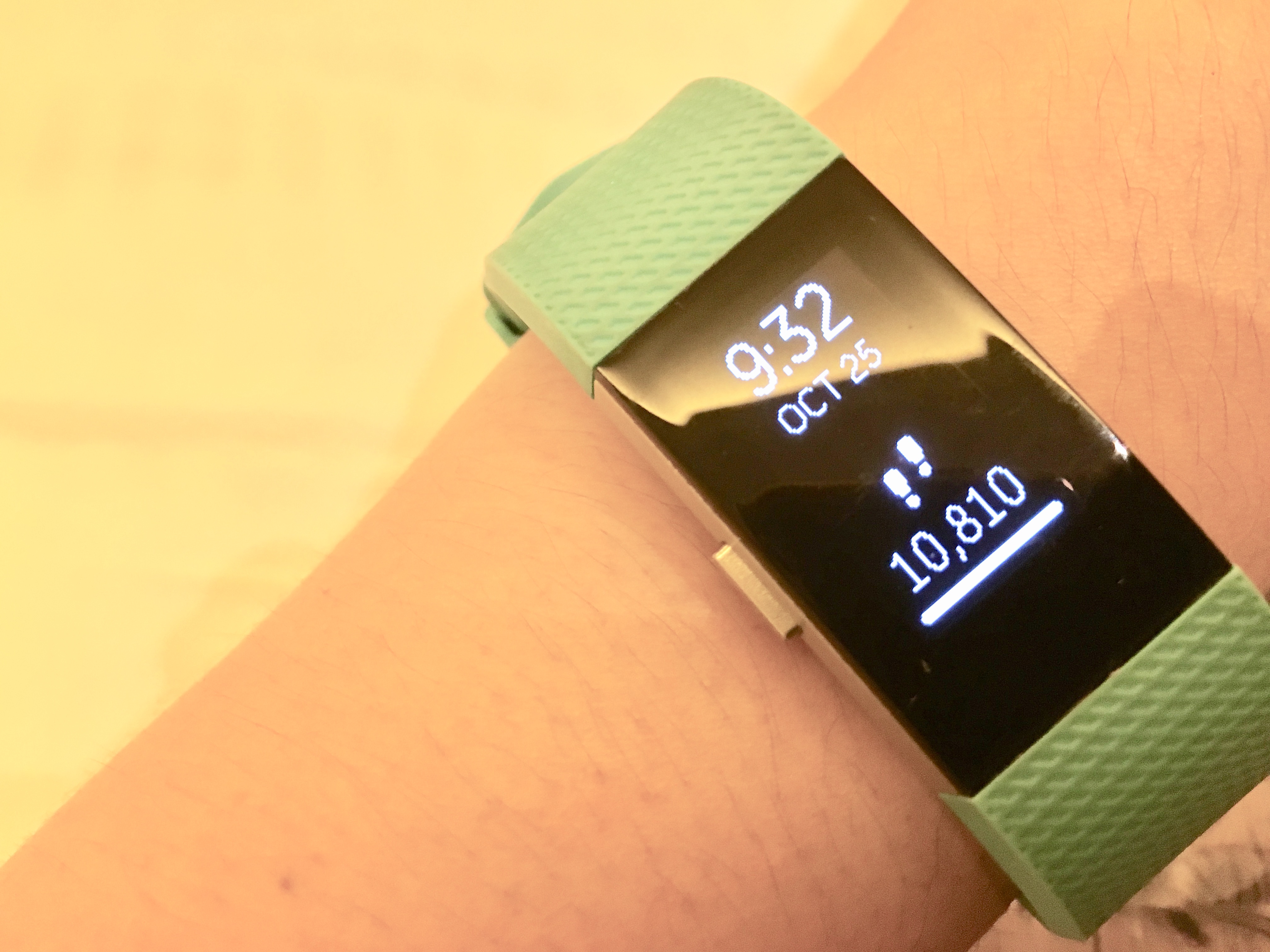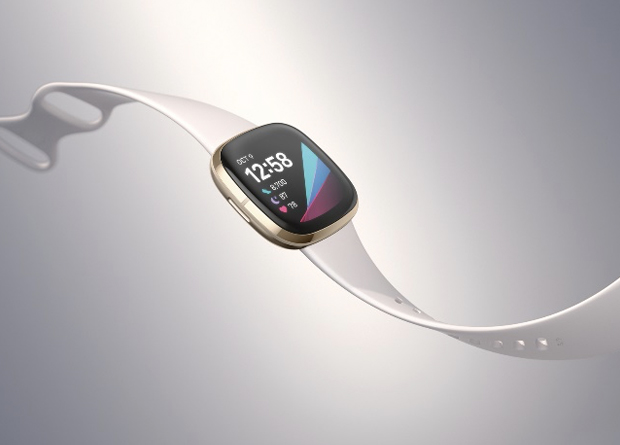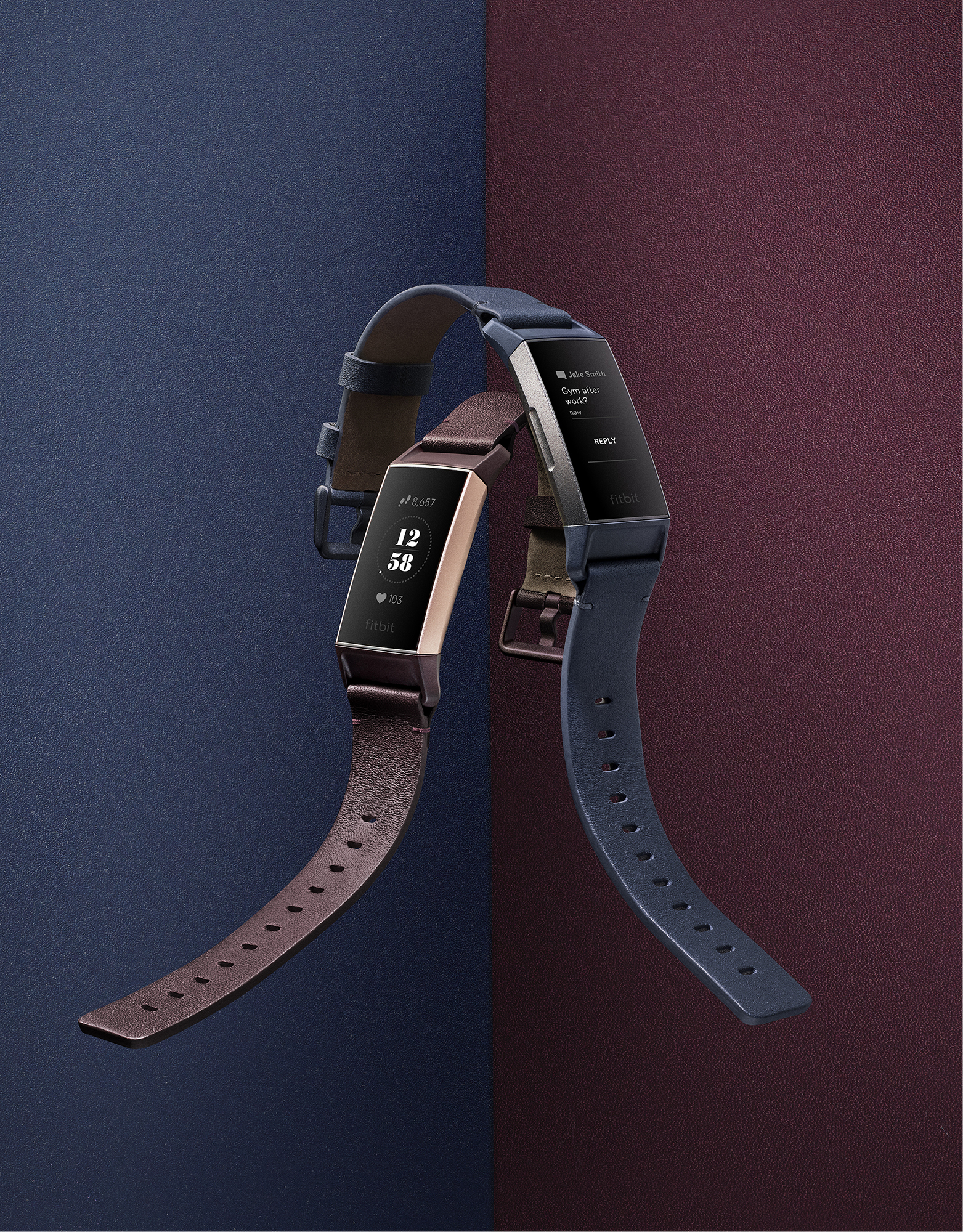I’ve been using the Fitbit Charge 2 for almost two months now and I must say I think I am more conscious about my physical activities now than before I used the tracker, which is an upgrade of the Fitbit Charge HR.
I haven’t tested the Fitbit Charge HR so I can’t make a comparison but the company says the Fitbit Charge 2’s display is four times larger than its predecessor. I guess the advantage with a bigger screen is you can see more data at a glance and get better notifications from your smartphone.
The first thing you need to do after removing the Fitbit Charge 2 from the box is to make sure it’s fully charged. Once it’s fully charged, download the Fitbit Charge 2 app from Google Play, App Store, or Microsoft Store, depending on the device you’re using.
After installing the app, you’ll need to enter some information to personalize and configure the tracker, such as weight and height. The Fitbit Charge 2 app lets you set alarms, choose a new clock face from seven designs, reorder the menu items, and more.
The tracker has only one button, which is on the left of the display. Use that to navigate through the features of the device. While it’s not really a touchscreen, the display responds when you give it a quick, firm tap on the screen or near the band.
To get reliable results from the tracker, wear the tracker loosely enough so it can move back and forth on your wrist. Don’t wear it too tightly, as this can restrict blood flow.
Now on to the more exciting features.
10,000 steps to health
The Charge 2 counts the steps (the recommended total number of steps you need to take daily is 10,000!) you take all day. It’s very demanding, which I found amusing, because it will remind you to move every hour for 2 minutes or about 250 steps. The reminders come in cute messages such as “Feed me 250 steps!” and “Take me for a walk?” Now you know why I’ve become fitness-conscious! Don’t worry, you can turn off the hourly notification with the app; but that would not be a good idea if you’re serious about getting and staying healthy.
Love your heart
The Charge 2 also tracks your heart rate, which I really like. The Fitbit app can even give you a Cardio Fitness Score, based on your resting heart rate as well as data gathered during exercise. That way, as you progress, you can see how lifestyle changes like moving more and eating healthier affect your overall score.
With the Fitbit app, you can view your all-day heart rate and see how your resting heart rate, a key indicator of your fitness level, changes over time.
Keep calm and relax
Another new Fitbit feature is a cool two-minute Relax feature that guides you through deep breathing. The Relax features tries to detect your breathing rate when you launch it, and use that to tailor the experience. An animated guide will tell you when to inhale and exhale. Make sure you’re sitting or standing still during the entire breathing exercise. During the session, you’ll see sparkles on the display to let you know if you’re doing a good job. The more sparkles, the more aligned each breath is with the guide.
I found this to be a very handy feature since I am always under stress.
Multisport tracking
If you’re the kind that enjoys a lot of sports, you’ll be glad to know that the Charge 2 has “multisport tracking” feature that lets you track almost any kind of exercise, like yoga, elliptical workouts, and interval training. Some sports like running, walking, and cycling can be detected automatically, meaning you don’t even have to put the Charge 2 into workout mode.
The Charge 2 uses “connected GPS” to track your walking and running routes in the Fitbit app with your phone’s GPS, and show pace and distance data on your wrist in real time. It also has a stopwatch to let you time your activities.
Good night, sleep tight!
I’ve always wondered how many hours I’ve really slept, thus I was happy to learn that the Fitbit Charge 2 can automatically track your sleep, as long as you’re wearing the tracker while you’re in bed.
When you wake up in the morning, synchronize your tracker with the app in your phone to determine how many hours you’ve slept. The app will tell you how many hours you were asleep, restless, or awake during the night.
The tracker also lets you set bed time and wake up targets to establish better sleep consistency, then get reminders to stay on schedule. The app will provide a sleep schedule history to chart your progress.
I noticed though that results are more accurate if you put the sensitivity of the sleep monitoring feature to “normal.”
The Fitbit Charge 2 lets you find out how fit you are with a personalized Cardio Fitness Score and Cardio Fitness Level.
The Cardio Fitness Score is based on VO2 Max, which is a measurement of how well your body uses oxygen when you’re working out at your hardest. Your user profile, heart rate and exercise data are used to determine your score. The higher your score, the better your cardiovascular fitness.
VO2 Max is traditionally measured in a lab where you run on a treadmill or ride a stationary bike until exhaustion while having a mask strapped to your nose and mouth to measure your oxygen consumption. While this gives the most accurate measure of VO2 Max, the Fitbit Charge 2 can estimate this value for you with much less effort and discomfort, according to the company.
The Cardio Fitness Level (from poor to excellent), meanwhile, lets you know where you stand compared to other who are the same age range and gender.
The Fitbit app lets you connect with friends and see how you rank on the leaderboard, join a challenge, and set and accomplish weekly exercise goals. Honestly, I haven’t tested this “social” feature yet since I don’t know who among my friends use Fitbit. Also, I’m not that comfortable about telling others about my exercise routine. But the app will let you “find” friends using your contact book, Facebook account, and email. Will update this review once I’ve tried it.
Almost a smartwatch
While it’s a fitness tracker and not a smartwatch, the Fitbit Charge 2 can notify you of incoming calls and texts as well as calendar appointments, when it’s in Bluetooth range of your phone. When I’m in church or in a meeting, I switch my smartphone to silent mode and leave it in the bag. The Fitbit Charge 2 will just let me know if there is an incoming call or text. Just don’t forget to turn on the Bluetooth feature of your phone.
The Charge 2 has a secure metal buckle that lets you change the strap. Fitbit is selling the Charge 2 with a rubbery strap for Php8,499, in black, blue, plum, and teal. If you want to change the strap, you can buy another one for Php1,399. Leather bands are also available for Php3,299, in indigo, brown and blush pink.
To change the strap, simply press on the custom, quick-release latch connecting the tracker to the band; when connecting a new band, you’ll hear an audible “click” when it’s securely in place.
The battery life of the tracker is surprisingly long. I went out of the country twice in October and I brought the Fitbit Charge 2 along but forgot to pack the charger. Surprisingly, the Fitbit Charge 2 was still operating for almost three days after I got back from my three-day foreign trips.
Synchronize the app and the tracker at least once a day. You can also update the tracker’s software using the app, if there is any update. There will be times that syncing will fail. This has happened to me several times. My solution was to fully charge the tracker before hitting the sync button.
The verdict
After using the Fitbit Charge 2 for almost two months, I can say that the tracker is very useful and would highly recommend it to those who would like to monitor how fit they are. The price of the tracker may be a little too high but the insights you get from the Fitbit app will be very useful in keeping you healthy and, thus, help you avoid unexpected medical expenses.
Just remember to keep the strap clean and don’t always wear the tracker, otherwise you’ll end up with an irritated skin, like me.










































































































